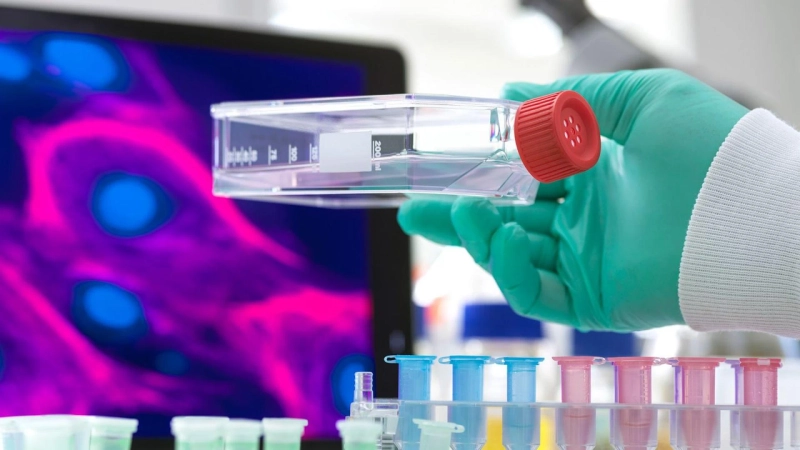There are more and more studies that support the infiltration of mesenchymal cell concentrate or stem cells for the treatment of moderate or severe osteoarthritis of the hip and knee, for the control of pain and mobility. This improvement of osteoarthritic disease is achieved thanks to:
Decreased degree of joint painDecrease in the degree of joint inflammationImproved movement and joint functionalitySlowing down of the joint degeneration processWHAT DOES IT CONSIST OF?
The mesenchymal cell concentrate is extracted from the abdominal fat by means of a miniaspirate performed in a sterile surgical room. It is done with a little sedation, like when we perform a gastroscopy / colonoscopy.
The extracted fat, which is approximately 200 cc, is processed at the same time by means of a mechanical membrane system that separates the fat itself from the mesenchymal cell concentrate. All this is done through a closed system and without adding any external agent, so the result lacks the possibility of rejection as it is the patient's own cells.
In the same act, the infiltration of the concentrate is carried out inside the joint and in the focus of the lesion, thanks to the help of a high-power ultrasound machine and/or a fluoroscope device. The mesenchymal cell concentrate is also introduced together with a significant amount of plasma rich in platelet factors obtained from the patient's own blood to activate these cells more powerfully.
It would be as a simile, as if we planted seeds in a land and we need to irrigate them with water so that they germinate. For the seeds are the cells and the water is the plasma. The duration of this entire process is usually around two hours.
Also in the same act, subchondral or intraosseous infiltrations can be performed (that is, below the cartilage) to also activate the subchondral bone or eliminate the edema produced by osteoarthritis. Even minimally invasive arthroscopic surgery can be performed for meniscal repair or remodeling of joint injuries.
After the treatment?
The infiltration is normally performed on an outpatient basis, and the patient can be discharged the same day. The patient is allowed to walk with crutches for the first two weeks and it is recommended to reinforce the treatment with a specific rehabilitation physiotherapy program. It is also advisable to carry out basic care against osteoarthritis, such as body weight control, good nutrition and micronutrient intake, daily low-impact exercise and correction of tread in the event of any alteration.
Treatment effectiveness?
According to the different published studies, it is estimated that between 80-90% of patients present considerable improvement in pain symptoms and functionality in the 3-6 months following treatment according to different studies. That is the minimum time that all our cellular processes need to produce tissue proliferation and activate tissue regeneration processes.
The average of this improvement is usually 3 years. Being able to repeat this or other regenerative medicine processes to maintain the improvement as long as there is a relapse of the symptoms of osteoarthritis.
Finally Hip Replacement Treatment is the best option.
0


